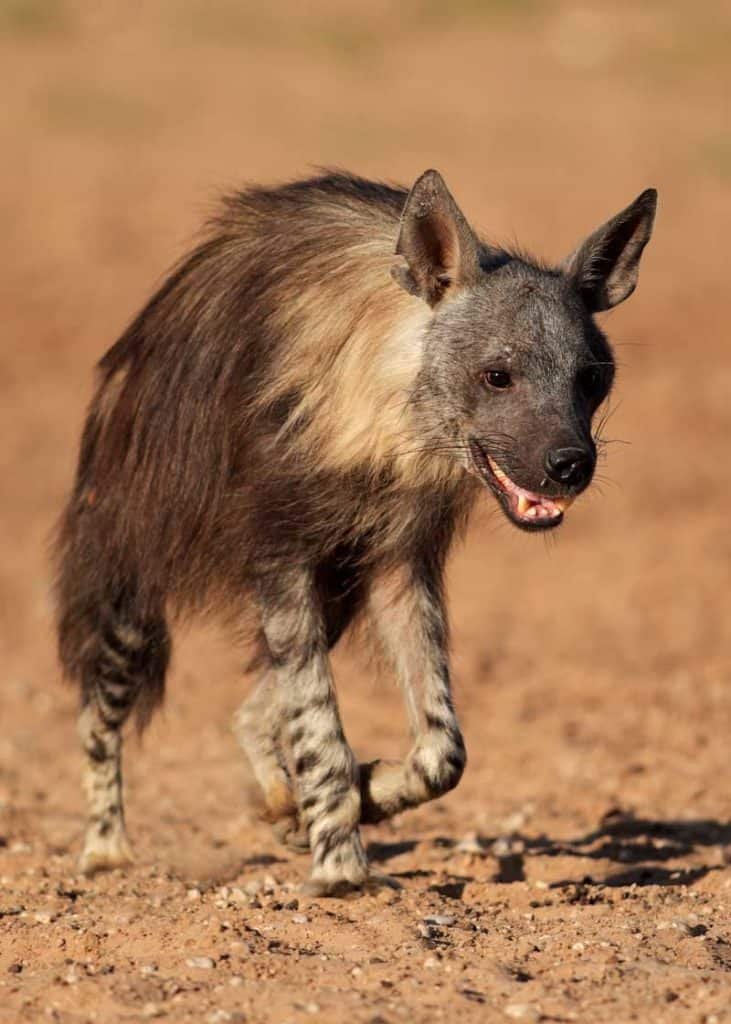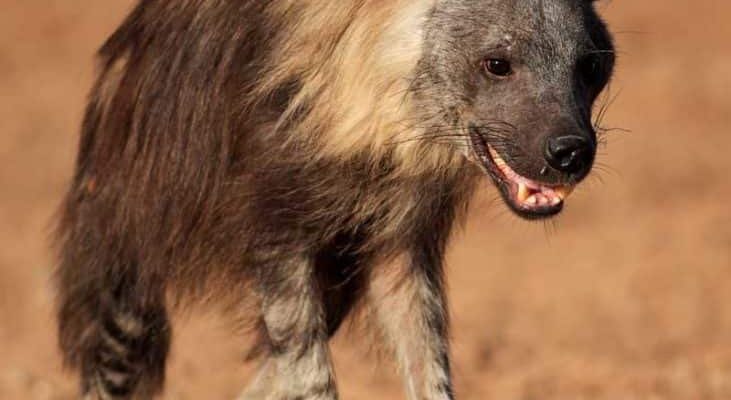
So, what’s on the menu for these elusive scavengers? And how do they catch their food? Let’s dive into the world of brown hyenas, exploring their diet, hunting strategies, and more.
What Do Brown Hyenas Eat?
Brown hyenas are primarily scavengers, which means they often rely on leftovers from other predators. Their diet is like that of a buffet, where they take advantage of whatever they can find. This can include the remains of large carcasses left by lions or leopards. They’re not picky eaters, which is a good thing in the harsh environments of southern Africa.
Here’s a closer look at their diet:
- Carcasses: Brown hyenas mainly feed on dead animals. They have strong jaws that allow them to crack open bones, giving them access to nutrient-rich marrow.
- Smaller Animals: While they prefer scavenging, brown hyenas also hunt smaller prey, like rodents, birds, and even insects, if the opportunity arises.
- Plant Matter: They occasionally consume fruits and vegetables, adding a touch of variety to their diet.
You might be wondering why they rely so heavily on scavenging instead of hunting. This method saves energy, allowing them to thrive in environments where food can be scarce. It’s like attending a potluck dinner—you get to enjoy a variety of dishes without doing all the cooking!
Hunting Strategy: A Unique Approach
While brown hyenas love scavenging, they are also skilled at hunting when needed. Their hunting strategy is a mix of stealth and cleverness. Think of a brown hyena as a detective on a mission—they know how to gather clues and make the most of their surroundings.
One key element of their hunting technique is patience. They often stalk their prey quietly, waiting for the perfect moment to strike. Rather than chasing after fast-moving animals, they take their time, using cover to remain hidden.
Another interesting aspect of their hunting is teamwork. Brown hyenas sometimes hunt in small groups, which increases their chances of catching something. It’s like a team of friends trying to solve a puzzle together. They communicate with each other through various vocalizations, such as growls and whoops, which helps them coordinate their efforts.
Adaptations for Survival
Brown hyenas have several adaptations that help them thrive as scavengers and occasional hunters. First, let’s talk about their physical features. They have powerful jaws and strong teeth designed for chewing through tough materials like bone and hide. This is crucial for accessing the nutrients from the carcasses they often consume.
Their long, shaggy fur not only helps them blend into their surroundings but also keeps them warm during cooler nights. This helps them maintain their energy without needing to expend too much effort hunting during the cold.
Lastly, brown hyenas have a keen sense of smell, allowing them to detect carrion from miles away. This is especially helpful in their arid, open habitats where food can be hard to find.
The Role of Brown Hyenas in the Ecosystem
Brown hyenas play an essential role in their ecosystem that often goes unnoticed. By scavenging and consuming carcasses, they help control disease and recycle nutrients back into the environment. Think of them as nature’s cleanup crew, ensuring that dead animals don’t linger and spread illness.
Additionally, their feeding habits create opportunities for other wildlife. For instance, once a brown hyena has eaten, smaller scavengers like birds or jackals can benefit from the remains. This interconnectedness is a beautiful aspect of nature, showcasing how every species, no matter how small, contributes to the balance of the ecosystem.
Social Structure and Behavior
Brown hyenas are typically more solitary than spotted hyenas, but they do have interesting social dynamics. They form loose social groups called “clans,” but these can consist of just a handful of individuals. These clans are often matriarchal, meaning females tend to hold the dominant positions.
You may notice that brown hyenas have specific territories which they mark with scent as a form of communication. This is important for avoiding conflicts with other hyenas, as well as for signaling to potential mates.
Their behavior is flexible—they can be both shy and social depending on the situation. For example, when approaching a food source, they might act competitively, but when resting, they often groom each other, reinforcing social bonds like friends do at a café.
Conservation Status
Unfortunately, brown hyenas face challenges in the wild due to habitat loss and human conflict. These factors can threaten their populations and limit their natural foraging grounds. Conservation efforts are essential to protect these unique creatures and their habitats.
Organizations are working to create protected areas, raise awareness about their ecological importance, and improve relationships with local communities. It’s like a team effort to ensure that brown hyenas can continue to thrive in the wild.
In conclusion, the diet and hunting strategies of the brown hyena reveal a creature that is resourceful and vital to its ecosystem. By understanding these fascinating animals, we can appreciate the diversity of life on our planet and the importance of preserving it for future generations. Remember, every creature, even the ones that seem a bit quirky, has its place in the grand scheme of things!

